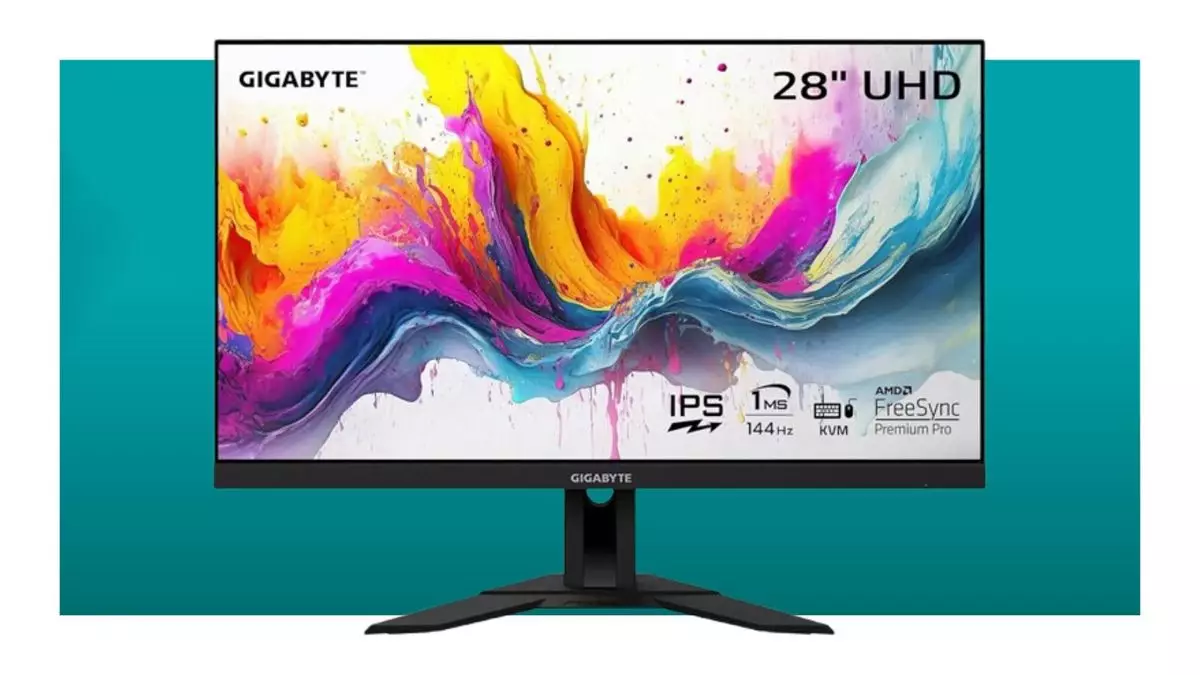The world of gaming monitors has seen a surge of options promising high performance without the exorbitant price tags. Among these, the Gigabyte M28U has emerged as a stalwart contender, earning accolades for being the leading budget 4K gaming monitor. With a tempting price reduction recently putting it at $350, the questions arise: What makes this monitor a stand-out choice, and are there any trade-offs that potential buyers should be aware of?
Price and Value
At its current price, the Gigabyte M28U is more than just a good deal; it represents a savvy investment for gamers looking to indulge in 4K resolution without breaking the bank. Priced $250 below its original MSRP and significantly cheaper than many similar models, this monitor is positioned as an excellent entry point into the high-res gaming experience. In a market where quality often comes at a premium, the M28U offers competitive features that usually accompany much pricier alternatives, making it a smart purchase during a time when high-end components are harder to come by.
On the performance front, the Gigabyte M28U impresses with a refresh rate of 144 Hz and a response time of just 1 ms GTG (gray-to-gray), ensuring that gamers enjoy fluid visuals with minimal motion blur. This combination is pivotal for fast-paced gaming, where every millisecond counts, providing a level of responsiveness that can enhance competitive edge in multiplayer scenarios. However, it’s worth noting that the monitor’s overdrive feature, while ostensibly designed to enhance speed further, can introduce visual artifacts— a consideration for discerning gamers who prioritize clarity over raw speed.
While the performance metrics may shine, the design elements of the M28U are somewhat less stellar. The stand, noted for its functional yet lackluster design, may not be the most sturdy or aesthetically pleasing. At 28 inches, the screen size strikes a balance between usability and desk space consumption. Although some users might desire a larger display for immersive gameplay, the M28U’s dimensions are adequate for tight setups. Furthermore, the ill-suited stand could limit ergonomic adjustments, possibly affecting comfort during extended gaming sessions.
The connectivity options of the M28U align well with modern gaming setups. Featuring a USB Type-C port, multiple USB 3.0 ports, and both HDMI 2.1 and DisplayPort 1.4 connections, this monitor is well-equipped for versatility. One standout feature is the integrated KVM (Keyboard, Video, Mouse) switch, which allows for seamless transition between PC and console setups. This multifaceted capability means that it can serve as a primary gaming display without the hassle of constant reconfiguration.
Visual Quality and Limitations
When it comes to visual performance, the M28U delivers a solid 4K picture that provides visual fidelity without being overly saturated. Nonetheless, it features average brightness levels at 300 cd/m², which is adequate but not exceptional. This limitation is crucial for users who prioritize high dynamic range (HDR) performance; while the monitor is visually pleasing, HDR may not be its strongest suit. Users are advised to consider environmental factors when placing the monitor, as exposure to direct sunlight can impact viewing quality.
The Gigabyte M28U stands as a compelling option for gamers looking to experience 4K without diving into debt. It balances impressive performance metrics with practicality, making it ideal for both casual gamers and those wanting to showcase a powerful gaming rig. Although it presents some trade-offs in build quality and brightness, the overall package is hard to beat at this price point. As the market continues to evolve, the M28U remains a steadfast choice in the budget category of 4K gaming monitors, combining value and functionality for the discerning gamer.

